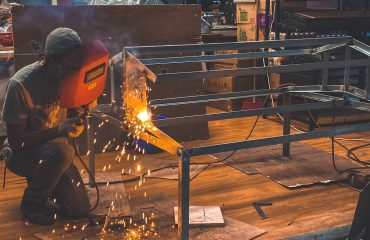body { font-family: sans-serif; line-height: 1.6; }
h1, h2, h3 { color: #333; }
img { max-width: 100%; height: auto; }
Annealed wire, a marvel of metallurgical engineering, plays a crucial role in countless industries. Its unique properties, achieved through a controlled heating and cooling process, make it incredibly versatile and adaptable to a wide range of applications. This post delves into the fascinating world of annealed wire, exploring its characteristics and its significant contributions to various sectors.
Understanding the Annealing Process and its Impact on Wire Properties
Annealing is a heat treatment process that alters the microstructure of a metal, typically wire, to improve its ductility, reduce its hardness, and relieve internal stresses. The process involves heating the wire to a specific temperature, holding it at that temperature for a certain period, and then slowly cooling it. This controlled heating and cooling cycle refines the grain structure of the metal, making it more malleable and easier to work with. The specific annealing temperature and cooling rate depend on the type of metal and the desired properties of the final product. For instance, copper wire is annealed at a lower temperature than steel wire to achieve optimal softness and conductivity. The impact of annealing is profound: it transforms a potentially brittle wire into a highly workable material, ready for intricate shaping and forming.
Annealed Wire in the Electrical Industry: Powering Our World
The electrical industry is a major consumer of annealed wire. Its excellent electrical conductivity, combined with its malleability, makes it ideal for various applications. Annealed copper wire, in particular, is the backbone of electrical wiring in homes, buildings, and power grids. Its ability to conduct electricity efficiently with minimal resistance is paramount in ensuring safe and reliable power transmission. Furthermore, the ductility of annealed copper allows for easy bending and shaping, making it suitable for intricate wiring configurations in electronic devices and appliances. The use of annealed wire in transformers, motors, and generators is equally critical, showcasing its indispensable role in modern electrical infrastructure.
Applications of Annealed Wire in Manufacturing and Construction
Beyond the electrical sector, annealed wire finds extensive use in manufacturing and construction. In manufacturing, it forms the basis of various components, including springs, fasteners, and wire mesh. The ability to easily shape and form annealed wire enables manufacturers to create intricate designs and complex geometries. Its strength and resilience are crucial in applications requiring durability and load-bearing capacity. In construction, annealed wire is used in reinforcing concrete, creating robust and stable structures. It’s also employed in fencing, mesh screens, and other structural elements, contributing to the overall strength and integrity of buildings and infrastructure projects. The versatility of annealed wire allows for its adaptation to various construction techniques and material combinations.
Annealed Wire in the Automotive Industry: Ensuring Safety and Performance
The automotive industry relies heavily on annealed wire for its superior strength and ductility. It is used extensively in the production of various components such as wiring harnesses, springs, and brake lines. The ability to withstand vibrations and stresses is critical in the demanding environment of a vehicle. Annealed steel wire, in particular, offers excellent tensile strength and fatigue resistance, making it suitable for applications requiring high durability and reliability. The precision and consistency in the annealing process are crucial in ensuring the safety and performance of automotive components. The precise control over the wire’s properties guarantees the reliable functioning of crucial systems, ultimately contributing to vehicle safety and performance.
Specialty Annealed Wires and their Niche Applications
Beyond common applications, specialized annealed wires exist, catering to specific industry needs. For example, stainless steel annealed wire exhibits exceptional corrosion resistance, making it ideal for applications in harsh environments. Similarly, nickel-chromium annealed wire is known for its high-temperature resistance, finding its place in heating elements and high-temperature applications. These specialty wires, with their tailored properties, demonstrate the adaptability and versatility of the annealing process. The precise control over the annealing parameters enables manufacturers to fine-tune the wire’s properties to meet specific requirements, expanding the possibilities of annealed wire in diverse and demanding applications. This continuous innovation ensures that annealed wire remains a crucial component in numerous technological advancements.
The versatility of annealed wire extends far beyond these examples. Its adaptability, strength, and ease of manipulation make it a cornerstone material in numerous industries, constantly evolving to meet the demands of modern technology.
SEO-Friendly Tags:
- Annealed Wire
- Annealing Process
- Wire Applications
- Copper Annealed Wire
- Steel Annealed Wire




